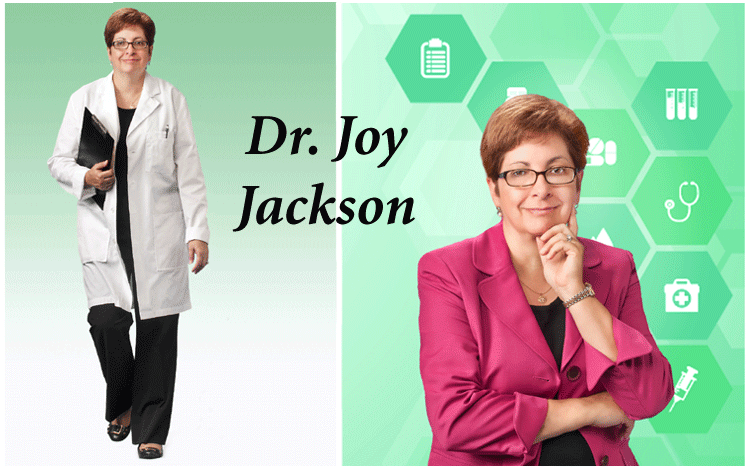AS A CHILD in South Carolina, Joy Jackson sometimes accompanied her mom Barbra when she made house calls as a nurse for the local health department. She saw families that were poor, living in rundown houses; sometimes the patients were terminal.
“I made the decision to become a doctor when I was in high school,” recalls 54-year-old Dr. Jackson, medical director of both the Florida Department of Health in Polk County (FDOH-Polk) and Lakeland Volunteers in Medicine (LVIM). “I did not realize at the time how much these observations affected me, but I learned compassion for the poor from my mother.”
Dr. Jackson, who is also a Polk County Medical Association member, likes making a difference in people’s lives. “The medical part is important, but developing a caring relationship with a patient and his or her family is also important,” she says. “I want to hear and celebrate births of grandchildren, and mourn the loss of a family member. It is hard not being able to fix problems, but many times people just want to talk to someone who cares.”
Dr. Jackson was born in Ohio, but her family relocated to South Carolina when she was 10. She earned her
medical degree at the University of South Carolina School of Medicine in Columbia, S..C, and then did her residency in Internal Medicine at the University of Florida in Gainesville.
Afterward, she came to Lakeland and worked for Watson Clinic. “This was both challenging and rewarding, and I learned a great deal by working with wonderful physicians in multiple specialties,” she recalls.
She then became a physician’s adviser at Lakeland Regional Medical Center before joining the FDOH in 2011. In 2012, she became medical director at FDOH-Polk and LVIM. “The last few years have been rewarding in that I am back in the community and hopefully giving back to those who are in need,” she says.
Dr. Jackson and her husband, Mike Martin, a trial lawyer, have two daughters: Kate and Rachel.
She chooses to work in public health because she prefers to address the health concerns of entire communities. “By serving in this way, I feel as if I am able to impact the lives of many people, and to me that is exciting,” she explains.
Community health is influenced by a number of factors, many outside the control of the health department. “I enjoy the challenge of addressing these concerns with the many community partners and stakeholders with whom we have developed relationships,” Dr. Jackson elaborates. “On the patient-care side, public health is about prevention and treatment of communicable disease.” She says the biggest challenges are “anticipating and adapting to changing priorities. Ongoing funding for services is always a concern,” she adds.
At LVIM, which targets the working uninsured, she enjoys working with physicians, nurses, pharmacists, and lay volunteers “who are there because they truly want to be,” she says. “The patients are grateful for the care they receive. It is a situation where everyone feels good about being there and feels valued. It is wonderful to see the good work that is going on for people, many of whom are temporarily down on their luck.”
Since her residency, Dr. Jackson has witnessed many changes. “There have been tremendous advancements in diagnostic testing and treatments. It is a challenge to stay current, particularly in areas that I may not be exposed to regularly,” she says.
Digitizing medical records is both “a benefit and a curse,” she says. “Documentation is legible and organized, but it takes longer and sometimes you lose the feel of the patient,” she explains. It might be like reading football statistics in the newspaper instead of watching the game.
But change is inevitable. “Changes are escalating due to research and technology. I think there will be more computer-assisted diagnosis and treatment recommendations,” asserts Dr. Jackson. “I have hopes that patients can be more engaged in their own health with apps (software applications) that assist with monitoring and advising regarding both acute and chronic conditions.”
The human side of medicine hasn’t changed, however. “Most patients,” she observes, “still want to feel a connection with their healthcare team.”
CREDITS
story by CHERYL ROGERS
photos by PEZZIMENTI
